RiflemanKulbir Thapa:
3rd Queen Alexandra’s Own Gurkha Rifles
Fauquissart, France, September 1915 Formost conspicuous bravery during operations against the German Trenches south ofFauquissart, when himself wounded, on the 25 September 1915, he found a badly woundedsoldier of the 2nd Leicestershire Regiment behind the first lone German trench,and through urged by the British soldier to save himself, he remained with himall day and night. In the early morning of the 26th September, in misty weather,he brought him out through the German wire, and leaving him in a place ofcomparative safety returned and brought in two wounded Gurkhas one after theother, He then went back in broad daylight for the British soldier at mostpoints under the enemy’s fire.
|
|
KarnaBahadur Rana (Magar)
3rd Queen Alexandra’s
Own Gurkha Rifles
El. Kefr, Egypt
10 April 1918
On 10 April 1918 at El. Kefr, during an attack, Rifleman Karan Bahadur Rana anda few other men crept forward with a Lewis gun under intense fire to engage anenemy machine-gun. No. 1 of the Lewis gun team opened fire but was shot almostimmediately, whereupon the rifleman pushed the dead man off the gun, openedfire, knocked out the enemy gun crew and then silenced the fire of the enemybombers and riflemen in front of him. During the remainder of the day he didmagnificent work and finally assisted with covering fire in the withdrawal,until the enemies were close on him. Dateand Place of Birth: 21 December 1898;
V. Mangalthan, Gulmi, Nepal; son of Dalbir Rana
Enrolled: 21 December 1916
Exact from VC Holder Reference books
| .jpg)
|
SubedarLal Bahadur Thapa (Magar)
2nd King Edward VII’s Own Gurkha Rifles
Resse-es- Zouai, Tunisia,
N. Africa April 1943
On the night of 5-6 April, during the silent attack on the Resse-es-Zouai,Subadar Lal Bahadur Thapa was Second-in-Command of D Company….
The garrison of the outer posts were all killed by Subadar Lal Bahadur Thapaand hi men by kukri or bayonet in the first rush and the enemy then opened veryheavy fire straight down the narrow enclosed pathway and steep arena sides.Subadar Lalbahadur Thapa led his men on and fought his way up the narrow gullystraight through the enemy’s fire, with little room to manoeuvre, in the faceof intense and sustained machine-gun concentrations and the liberal us ofgrenades by the enemy.
Next the machine-gun posts were dealt with, Subadar Lal Bahadur Thapapersonally killing two men with his kukri and two more with his revolver. ThisGurkha Officer continued to fight his way up the narrow bullet-swept approachesto thecrest. He and two riflemen managed to reach the crest, where Subadar LalBahadur Thapa then secured the whole feature and covered his company’s advanceup the defile ………..
Extract from LondonGazette
June 1943
|
|
HavildarGaje Ghale
5th Royal Gurkha Rifles (FF)
Chin Hills, Burma(Myanmar)May 1943
….while preparing for the attack the platooncame under heavy mortar fire but Havildar Gaje Ghale rallied them and led themforward.
Approaching to close range for the well-entranced enemy, then latoon came underwithering fire and this NCO was wounded in the arm, chest and leg by an enemyhand grenade. Without pausing to attend to his serous wounds and with no heedto the intensive fire from sides, Havildar Gaje Ghale closed hi men and ledthem to close grips with the enemy when a bitter hand to hand struggle ensued.
Havildar Gaje Ghale dominated the fight by his outstanding example of dauntlesscourage and superb leadership. Hurling hand grenades, covered in blood from hisown neglected wounds, he led assault after assault, encouraging his platoon byshouting the Gurkha’s battle cry.
Spurred on by the irresisitible will of their leader to win, the platoonstormed and carried the hill by a magnificent all out effort and inflicted veryheavy casualties on the Japanese.
Extract from LondonGazette
September 1943
| 
|
RiflemanGanju Lama
7th Gurkha Rifles
Ninthoukhong, BurmaJune 1944 … B Company, 7th Gurkha Rifles, was ordered tocounter-attack and restore the situation. Shortly after passing the startingline it came under heavy enemy medium machine-gun and tank machine-gun fire atpoint blank range, which covered all lines of approach. Rifleman Ganju Lama,the No.1 of the PIAT gun, on his own initiative, with great coolness andcomplete disregard for his own safety, crawled forward and engaged the tankssingle handed. In spite of a broken left wrist and two other wounds, one in hisright hand and one in his leg, caused by withering cross fire concentrated uponhim, Rifleman Ganju Lama succeeded in bringing his gun into action withinthirty yards of the enemy tanks and knocked out first one and then another, thethird tank being destroyed by an anti-tank gun. In spite of his serous wounds,he then moved forward and engaged with grenades the tank crews, who nowattempted to escape. Not until he hand killed them all, thus enabling hiscompany to push forward, did he allow himself to be taken back to theRegimental Aid Post to have his wounds dressd…….
Extract from LondonGazette
September 1944
| 
|
RiflemanTul Bahadur Pun
3rd Bn. 6th Gurkha Rifles
Moguang, Myanmar (Burma)
23 June 1944
Rifleman Tul Bahadur Pun then seized the Brengun and firing from the hip as he went, continued the charge on this heavilybunkered positioned alone, in the face of the most shattering concentration ofautomatic fire, directed straight at him. With the dawn coming up behind him,he presented a perfect target to the Japanese. He had to move for thirty yardsover open ground, ankle deep in mud, through shell holes and over fallen trees.
Despite these overwhelming odds, he reached the Red House and close with theJapanese occupants. He killed three and put five more to flight and capturedtwo light machine-guns remainder of his platoon which enabled them to reachtheir objective.
Extract from LondonGazette
9 November 1944
Born: Banduk Village, Nepal,
23 March 1923
| 
|
Rifleman (Acting Nak) Agam Singh Rai
5th Royal Gurkha Rifles (FF)
Bishenpur, Burma June 1944
…... This position was now under intense firefrom the .37 millimeter gun in the jungle and from “Water Piquet” Naik AgamSing Rai at once advanced towards the gun, his section without hesitationfollowing their gallant leader. Intense fire reduced the section to three menbefore half the distance had before half the distance had been covered but theypressed on to their objective. Arriving at close range, naik Agam Singh Raikilled three of the crew and his men killed the other two. The pary thenreturned to “Mortar Bluff” where the rest of their platoon were forming up forthe inal assault on “ Water Piquet” In the subsequent advance heavy machine-gunfire and showers of grenades from an isolated bunker position caused furthercausalities. Once more, with indomitable courage, Naik Agam Singh Rai, coveredby his Bren gunner, advanced alone with a grenade in one hand and his Thompsonsub-machine gun in the other. Through devastating fire he reached the enemyposition and with his grenade and bursts from his Thompson sub-machine gunkilled all four occupants of the bunker……
Extract from LondonGazette
September 1943
|  Agam Singh Rai.jpg)
|
A/SubadarNetra Bahadur Thapa (Magar)
5th Gurkha Rifles in 2nd World War
Bishenpur, Myanmar (Burma)
25-26 June 1944
On 25/26 June 1944 at Bishenpur, Subadar Netrabahadur Thapa was in command of asmall isolated hill post, when the enemy attacked in force. The men, inspiredby their leader's fine example, held their ground and the enemies were beatenoff, but casualties were very heavy and reinforcements were requested. Whenthese arrived some hours later they too became casualties, but the subadar,undeterred, retrieved the ammunition himself and took the offensive withgrenades and kukris, until he was killed.
Exact from VC Holder Reference books
|
|
RiflemanSher Bahadur Thapa (Chhettri)
9th Gurkha Rifles in 2nd world War
San Marino, Italy
18-19 September 1944
On 18 and 19 September 1944 at San Marino, Italy, when a company of the 9thGurkha Rifles encountered bitter opposition from a German prepared position, RiflemanSher Bahadur Thapa and his section commander, who was afterwards badly wounded,charged and silenced an enemy machine-gun. The rifleman then went on alone tothe exposed part of a ridge where, ignoring a hail of bullets, he silenced moremachine-guns, covered a withdrawal and rescued two wounded men before he waskilled.
Date and Place of Birth: 20 November 1921,
Ghalecchap village, Thamu tehsil, Nepal, son of Ramdhoj Thapa
Enrolled: 20 November 1942
Exact from VC Holder Reference books
|
|
RiflemanThaman Gurung
5th Royal Gurkha Rifles (FF)
Monte San Bartolo
Italy,November 1944
… By skillful stalking both scouts reached theposition undetected… Releasing that if the enemy opened fire the section wouldsustain heavy casualties, Rifleman Thaman leapt to his feet and charged. Theenemy completely taken by surprise surrendered with out opening fire.
He then crept to summits from which he saw a party of Germans well dug in ofthe reverse slopes… Rifleman Thaman crosses Ed the bare skyline firing his Tommygun, thus allowing the forward section to reach the summit.
Soon afterwards, due to heavy enemy machine-gun fire, the fighting patrol wasorder to withdraw. Rifleman Thaman then again crossed the skyline-alone firingburst upon burst of Tommy gun fire until his ammunition ran out. Having throwntwo grenades he rejoined his section, collection two more grenades and crossingthe skyline for the third time hurled them at the remaining Germans.
The diversion enabled both rear sections to withdraw. Meanwhile the leadingsection was still on the summit, so Thaman seized a Bren gun, ran yet again tothe skyline, emptied two magazines into the enemy position and then with theremaining section well in its way to safety turned to follow them, and at thatvery moment spun and fell with a bullet through his throat.
Extract from LondonGazette,
February 1945
| 
|
LanceNaik Bhanbhagta Gurung
3rd Bn, 2nd King Edward VII’s
Own Gurkha Rifles
Tamandu, East Myanmar (Burma)
5 March 1945
…. Rifleman Bhanbhagta without waiting for orders dashed forward alone toattack the first foxhole. With two grenades he killed both occupants andwithout hesitation rushed on to clear three more foxholes single handed withbayonet and grenade. Realizing that a light machine gun now firing on him wouldhold up not only has own platoon behind him but another approaching from thewest, Bhanbhagta for the fifth time advanced alone under heavy enemy fire toknock out this position.
Doubling forward he leapt on to the roof of the bunker from where, his handgrenades being finished, he flung two smoke and Bhanbhagta promptly killed thenboth with his Khukuri. Japanese inside the bunker was still firing the gunholding up the advance of the platoon, so Bhanbhagta crawler inside, killedthis remaining gunner and captured gun.
Extract from LondonGazette
5 June 1945
Date and Place of Birth: September 1921
Phalbu Village, Nepal,
|  |
HavildarLachhiman Gurung
8th Gurkha Rifles
Taungdaw, Myanmar (Burma)
12-13 May 1945
… Before assaulting, the enemy hurledinnumerable grenades at the position from close range. Once grenade fell on thelip of Rifleman Lachhiman Gurung’s trench; he at once grasped it and hurled itback at the enemy. A second grenade landed in his trench. Again this Riflemansnatched to throw it back but it exploded in his hand, blowing off his finger,shattering his right arm and severely wounding him in the face body and rightleg. His two comrades were also badly wounded and lay helpless in the button ofthe trench.
The enemy, screaming and shouting, now formed up shoulder to shoulder andattempted to rush the position by sheer weight of numbers. Rifleman LachhimanGurung, regardless of his wounds, fires and loaded his rifle with his lefthand, maintaining a continuous and steady rate of fire. Wave after wave offanatical attacks were thrown in by the enemy during the next four hour andall-were repulsed with heavy casualties…
Extract from LondonGazette
27 July 1945
Date and Place of Birth: 30 December 1916
Dawakhani, Nepal
|  |
Lance Corporal (Captain) Ram Bahadur Limbu
10th Princess Mary’s
Own Gurkha Rifles
Gunong Tepol, Indonesia,
21 November 1965
…Rushing forward he hurled himself in the ground beside one of the wounded andcalling for support had now come up to his fight in support he picked up to theman and carried him to safety out of the line of fire. Without hesitation heimmediately returned to the top of the hill determined to complete hisself-imposed task of saving those for whom he felt personally responsible. Itwas now clear from increase weightof fire being concentrated on the approachesto and in the immediate vicinity of the remaining casualty the enemy was doingall they could to prevent and further attempts at rescue. However, despitethis, Lance Corporal Ram Bahadur Lambu again moved out into the open for hisfinal effort. In a series of short forward rushes, once being pinned down forsome minutes by the intense and accurate automatic fire which could be seenstriking the ground all round him, he eventually reached the wounded man.Picking him up and unable now to seek cover he carried him back as fast as hecould through the hail of enemy bullets. For all but a few seconds this youngNCO has been moving alone in full view of the enemy and under the continuous aimedfire of their automatic weapons. That he was able to achieve what he didagainst such overwhelming odds without being hit is miraculous.
Extract from London,Gazette
21 April 1966
Date and Place of Birth: July 1939, Chyangthapu Village, Nepal,
|  Ram Bahadur Limbu.jpg) |


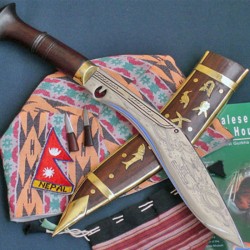
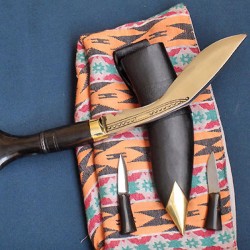
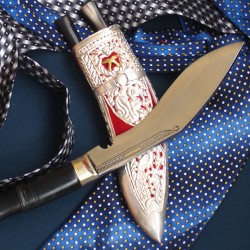
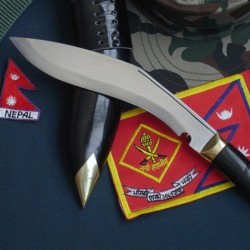
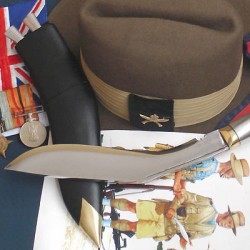
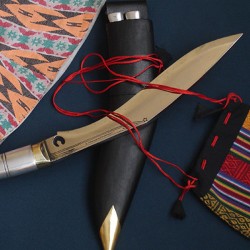
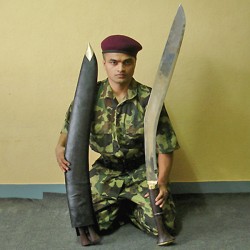
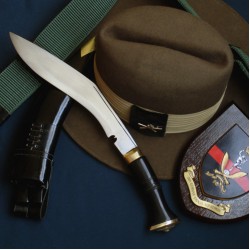
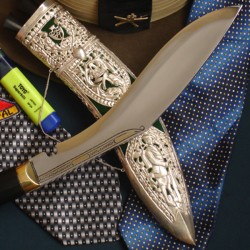
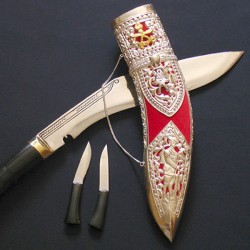
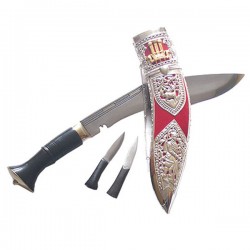
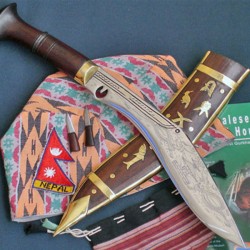
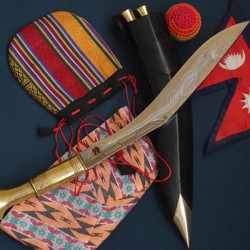
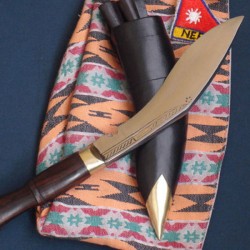
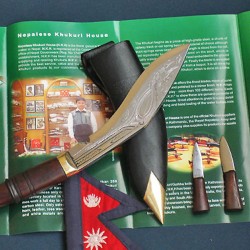

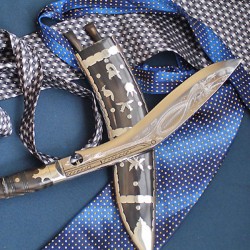
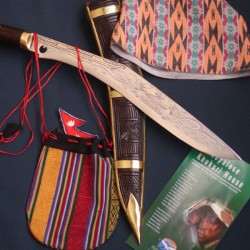
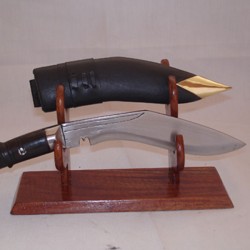
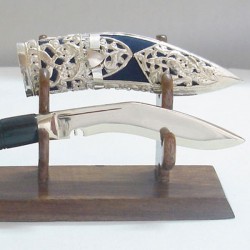
.jpg)



 Agam Singh Rai.jpg)



 Ram Bahadur Limbu.jpg)